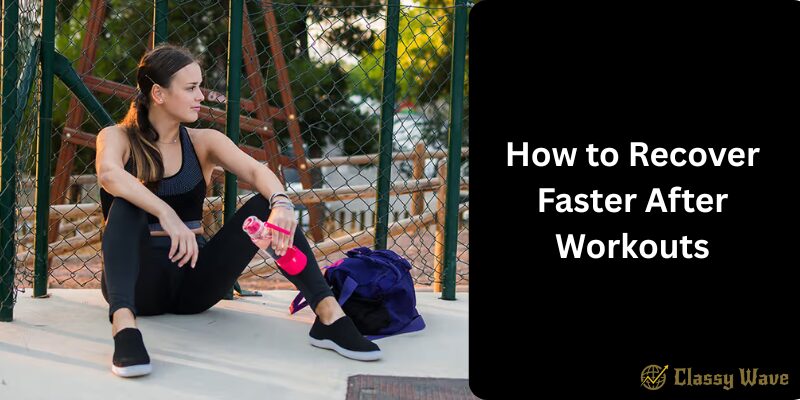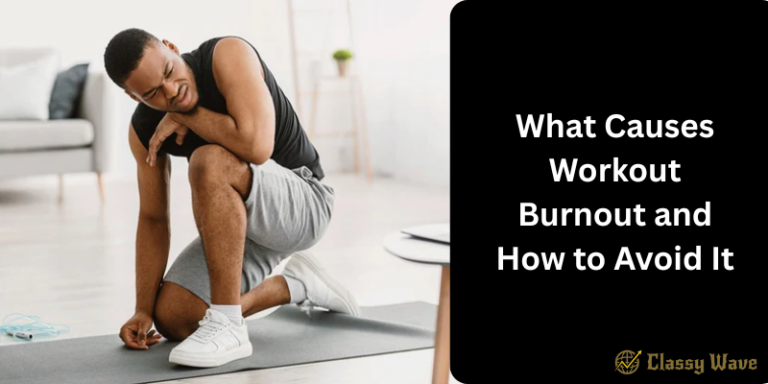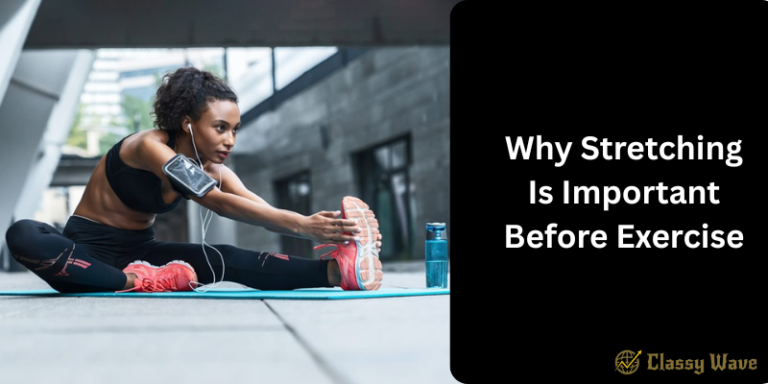How to Recover Faster After Workouts | Classy Wave
Feeling sore and tired after a tough workout? That’s your body’s way of saying, “I’m rebuilding!” Recovery is where the real magic happens—your muscles repair, strengthen, and grow. But if you’re not giving your body the right recovery tools, you might be slowing down your progress. In this article, we’ll explore how to recover faster after workouts and get back to training with more energy and less soreness.
Why Post-Workout Recovery Matters
Recovery isn’t just about resting—it’s about optimizing how your body heals and adapts. When you train, your muscles experience tiny tears. Proper recovery ensures these tears heal stronger, making you more resilient and improving performance. Skipping recovery can lead to fatigue, injuries, and slower results.
1. Stay Hydrated
Water is your best recovery partner. During exercise, your body loses fluids through sweat. Replenishing water (and electrolytes) helps prevent dehydration and muscle cramps.
Tip: Drink at least 2–3 liters of water daily and add electrolyte-rich drinks if you’ve had an intense sweat session.
2. Get Enough Sleep
Sleep is when your body releases growth hormones, which are essential for muscle repair. Aim for 7–9 hours of quality sleep every night.
Quick hack: Avoid screens before bed and create a cool, dark sleeping environment to improve your sleep quality.
3. Eat Protein-Rich Meals
Protein provides the building blocks for muscle recovery. Post-workout, your muscles are craving nutrients—feed them well!
Try this: Within 30 minutes after your workout, have a protein shake, eggs, chicken, or tofu. Pair it with complex carbs like oats or sweet potatoes for better glycogen replenishment.
4. Cool Down Properly
Don’t rush out of the gym. A proper cool-down session helps reduce lactic acid buildup and soreness.
Spend 5–10 minutes doing light stretching, yoga, or foam rolling to help your muscles relax and improve blood circulation.
5. Try Active Recovery
Instead of total rest, opt for active recovery—gentle activities like walking, swimming, or cycling at a low intensity. These movements boost blood flow, which helps deliver oxygen and nutrients to sore muscles.
6. Use Massage or Foam Rolling
A massage can do wonders for tired muscles. It relieves tension, improves circulation, and helps flush out toxins.
If a massage isn’t an option, use a foam roller to target tight areas. Roll each muscle group for about 30 seconds to 1 minute.
7. Take Rest Days Seriously
Overtraining is one of the biggest enemies of recovery. Listen to your body—if you’re constantly sore, fatigued, or losing motivation, you might need more rest.
Schedule at least one to two rest days per week to let your muscles fully recover.
8. Don’t Forget Stretching
Stretching increases flexibility and range of motion. Include dynamic stretches before and static stretches after your workouts. It not only helps with recovery but also reduces the risk of injuries.
9. Try Cold and Heat Therapy
Ice baths or cold showers can reduce inflammation, while heat therapy (like a warm bath or heating pad) helps relax muscles.
Pro tip: Alternate between hot and cold for the best of both worlds—reduce swelling and improve blood flow.
10. Use Supplements Wisely
Certain supplements can boost recovery:
- BCAAs (Branched-Chain Amino Acids): Help reduce muscle soreness.
- Creatine: Supports energy recovery.
- Omega-3 fatty acids: Help reduce inflammation.
Always consult with a health professional before starting new supplements.
11. Manage Stress Levels
Stress isn’t just mental—it impacts your physical recovery too. High cortisol (stress hormone) can slow muscle repair. Try meditation, deep breathing, or spending time in nature to keep stress under control.
12. Keep a Recovery Journal
Track your workouts, rest days, and how your body feels. This helps you notice patterns—like when you’re most sore or when you perform your best—so you can fine-tune your recovery strategy.
13. Listen to Your Body
Every body is different. Some people recover faster, others need more time. If something doesn’t feel right—sharp pain, fatigue, or lack of motivation—take it as a signal to slow down and rest.
14. Prioritize Consistency Over Intensity
Recovery isn’t just about what you do after one workout—it’s about how consistent you are. Consistent sleep, nutrition, and hydration habits help your body recover faster over time.
15. Mix It Up
Your recovery routine doesn’t have to be boring. Try yoga classes, sauna sessions, or light hikes. The key is to keep your body moving while giving it the care it deserves.
Conclusion
Recovery is not a luxury—it’s a necessity for progress. By sleeping well, eating right, staying hydrated, and taking rest seriously, you’ll not only recover faster but also perform better in the long run. Remember, fitness isn’t just about pushing hard—it’s about balancing effort and recovery.







